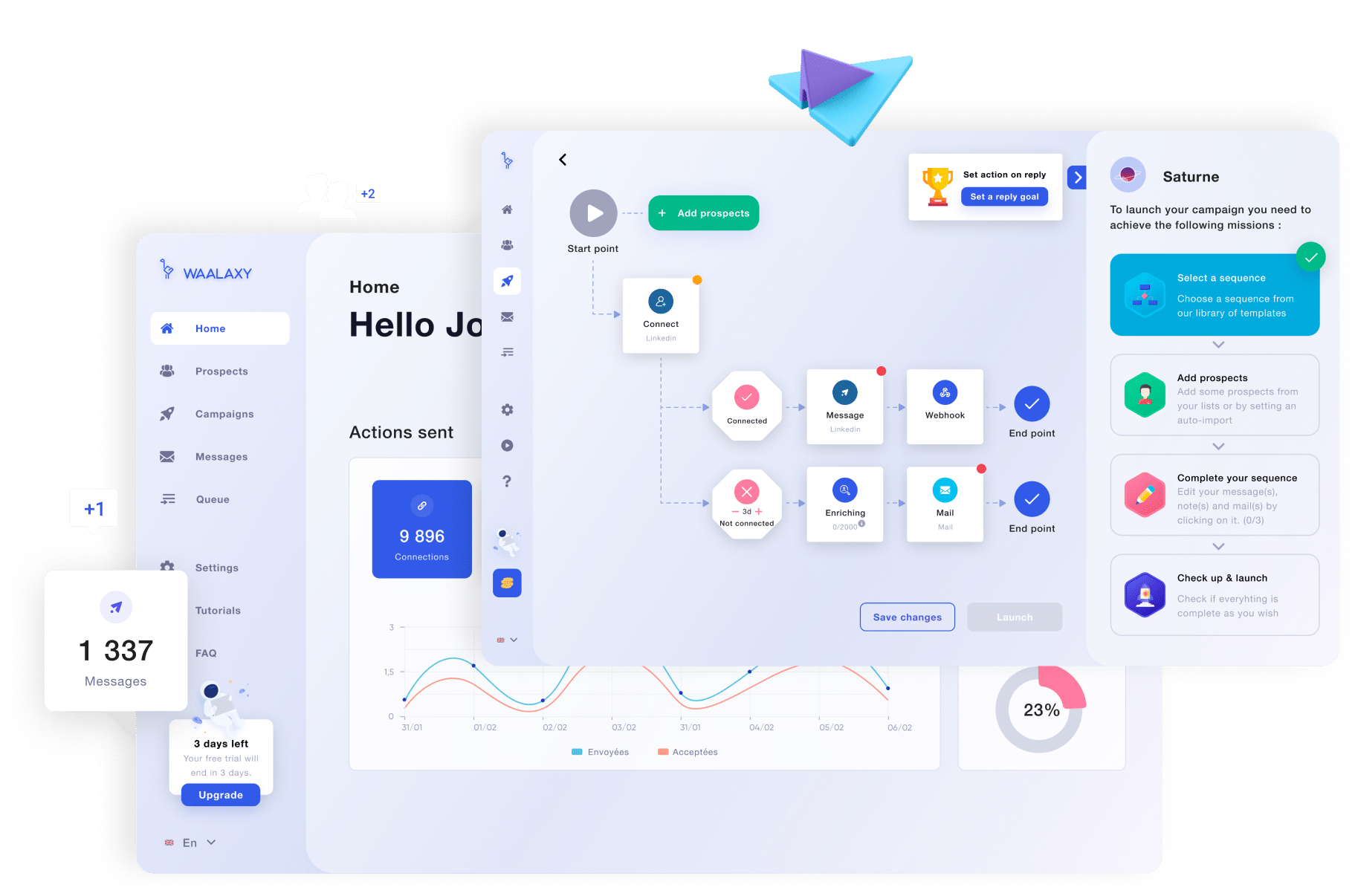If you work in the recruitment industry, you may already have heard about growth hiring. The human resources sector is undergoing a major (r)evolution. Finding qualified candidates who meet recruiters’ hiring needs in an increasingly competitive environment is becoming a time-consuming task. And convincing them to join the company is not much easier. In short, we’re beginning to see the limits of traditional methods. 😥
And suddenly, a new hiring process showed up ! Well, growth hiring is not just appearing out of nowhere. Born from a need of employers to adapt to these changing market and business landscapes , the growth hiring strategy is inspired by growth hacking to automate the hunt for talents, enhance the company’s image and, ultimately, attract and retain the most qualified profiles.
Let’s take a closer look at a recruitment strategy you will surely adopt. 🕵️
What is growth hiring?
To put our foot in it, “growth” refers to the increasing of companies needs , “hiring” is all about the recruitment process. It’s an innovative growth-oriented approach of recruitment, in which employers implement best practices aimed at employing top talents capable of actively contributing to the business growth. 📈
Growth hiring borrows its principles from growth marketing, a process generally applied by companies with a startup profile whose goals is to perfect, test and iterate on new user experiences and to significantly improve their efficiency with the least possible resources.
Where traditional recruitment methods focus solely on identifying skills to target potential candidates, growth hiring focuses on 4 main pillars.
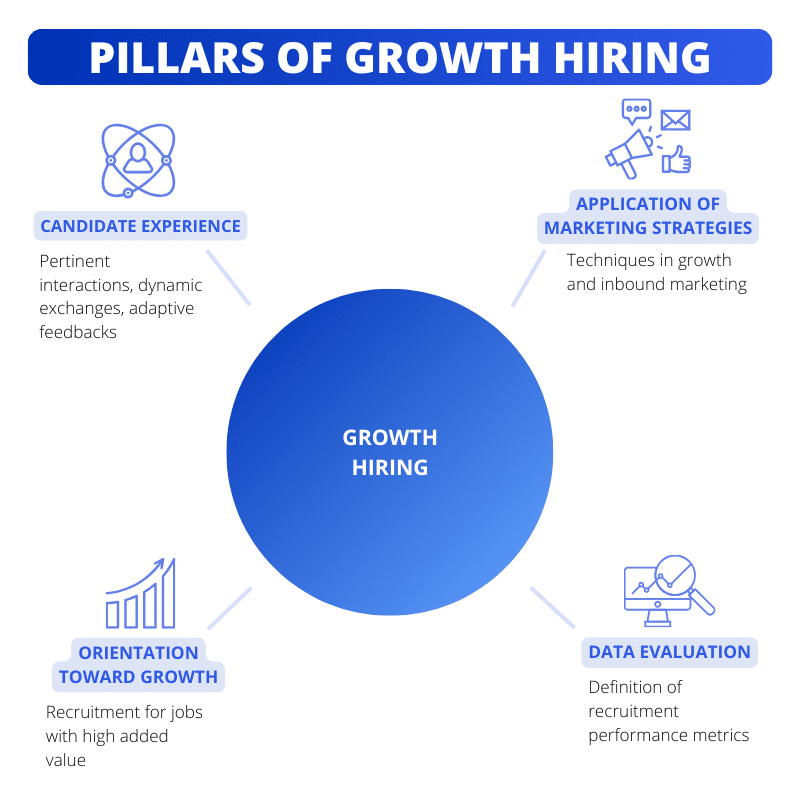
At a time when the war for talent is raging on the job market, it is going to be vital for recruiters to make the most of this method, which will enable them to :
- Automate processes to save time. 🤖
- Easily identify the best candidates to reduce the margin of error. 🔎
- Facilitate the adaptation of talent to the corporate environment. 🤝
Okay, so all of this may still seem a bit hazy. But just for you, I’m going to list the various benefits that growth hiring can bring to you, employer. Then I’ll go over the steps and tools you can go through to go after your future talents. 🤠
The benefits of growth hiring
Growth hiring is not just good for employers, but also for job applicants.
We’re no longer in a one-way relationship where organisations can pick and choose from an infinite pool of candidates (and not necessarily the most qualified ones either), but rather where interactions between the two parties are optimized to lead to the signing of a beneficial contract:
- To the recruiter for the growth strategy to come. 📈
- To new employees, so that they can find meaning in their assignments and feel good about their working environment. 🧘♀️
Targeting candidates with the best profile
Candidate targeting, also known as sourcing, is an early stage in the hiring process. This step is crucial. Efficient growth hiring optimizes this phase by focusing not only on candidates’ technical skills, but also on their personality traits.
By focusing on applicants’ soft skills, you can ensure that they :
- Match your values and your way of working. ☯️
- Will adapt quickly to locations and teams. 🏢
- Have a positive impact on the company’s growth. ✅
By optimizing your sourcing through growth hiring, you’ll also limit breakage, and by breakage I mean employee turnover. Because yes, replacing someone costs as much time as money, so you might as well target the right candidates right from the start, don’t you think? 😉
Automating and accelerating the hiring process
“Automation” is the word of the moment. At the same time, getting rid of small, repetitive tasks that, when put end to end, can waste a considerable amount of time, sounds like a dream come true! But do you know what? With growth hiring, that dream becomes a reality. 😱
With the right recruitment automation tools, employers can do away with some of the tedious manual steps and ensure immediate responsiveness to candidates.
On the other hand, recent considerable progress in artificial intelligence has also had an influence on recruitment tools. The majority of these are now equipped with an AI whose main function is to analyze CVs, match profiles with the position to be filled, or suggest tests to be submitted to candidates based on the skills required to fullfill their future jobs. 🤖
By automating these actions, you’ll speed up the recruitment process, which inevitably fits in with companies’ rapid growth objectives. The time saved can then be used for more human-intensive tasks, such as interview preparation.
Enhanced candidate experience
And speaking of people, you’ll find that growth hiring is a strategy that benefits both recruiters and candidates. By introducing successful marketing techniques into the recruitment lifecycle, this approach makes the applicant’s journey more fluid and personal in a number of ways:
👉 No more endless waiting to find out if you’ve hit the nail on the head with the company! 🪰 Automated CV sorting based on targeted criteria means you can focus on the best profiles right from the start.
👉 The method emphasizes ongoing communication and constructive feedback that enhances the employer’s image with talent, something not to be underestimated for the latter’s future involvement. 💬
👉 Growth hiring methods focus on the candidate’s past achievements and potential impact on the company’s growth. Their career objectives will therefore generally be addressed from the earliest stages of their application for a tailor-made recruitment experience. 📐
How do you set up a growth hiring strategy?
Too much talk, not enough action! In concrete terms, what are the different growth hiring techniques you can apply to meet today’s recruitment challenges? 🧐
Since the method is inspired by growth marketing, using the famous AARRR conversion funnel, I’m going to explain the different tools you can use for each stage of this talent pipeline.
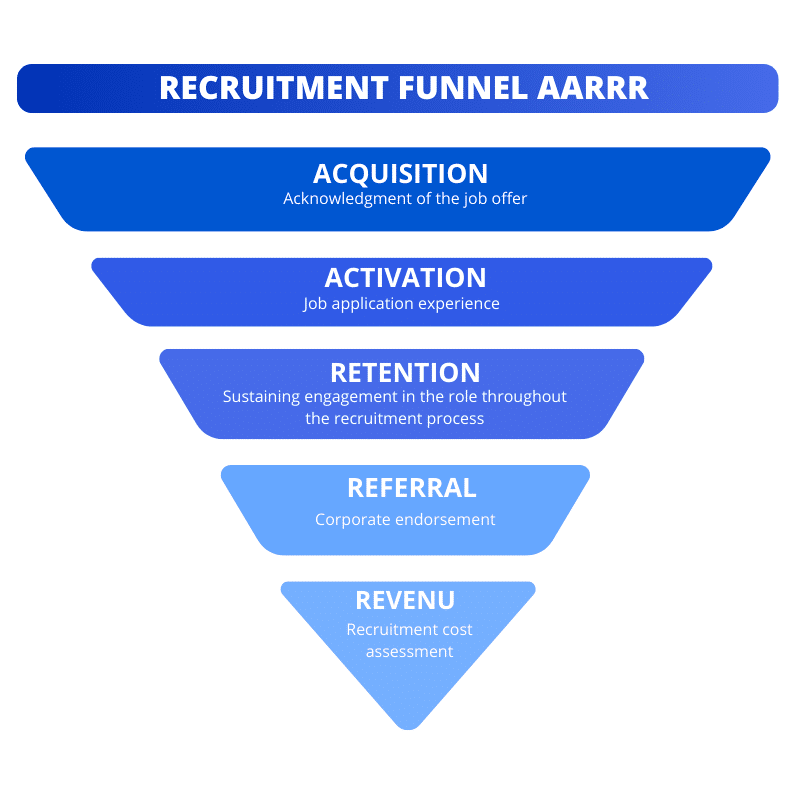
Acquisition: attracting the right candidates
As part of the recruitment process, acquisition is the first phase and consists of making yourself known to the pool of available candidates and letting them know that a position is open within your company. Basically, it’s the equivalent of eye-contact when you noticed that charming person leaning against the corner of the bar. 👁️
So how do you attract the best candidates ? Well, you’ll have to work on creating a strong employer brand: 👇
- Create written or video content on your blogs and social networks to talk about your values and show the stimulating environment in which your teams evolve. 📹
- Capitalize on your employees experience by turning them into brand ambassadors through testimonials about their jobs and the successes of their projects. 🗣️
- Highlight opportunities for internal promotion and skills enhancement through your training programs. 🔧
- Be present EVERYWHERE! Both on social networks and, of course, on job boards like Indeed or Monster. 🛜
- Take part in recruitment conferences, trade fairs and webinars. 🎤
Activation: facilitate job applications
The activation phase is the first contact with applicants. It is crucial in targeting profiles that perfectly match the position to be filled. The first step is to draw up a clear and engaging job description:
- Be specific about the job title! “Developer” is a bit vague, so it doesn’t hurt to add a little “Full Stack” after it 😉
- Present your company in a sexy way ! Highlight your culture, your values, talk about the advantages you have to offer. 🫦
- Identify the hard and soft skills essential for initial screening of applicants. 🔧
- Use a lexical field that revolves around growth and challenge to arouse the interest of candidates with an ambitious mindset! 💪
- Talk in numbers ! Company performance KPIs, quantified mission objectives, salary range. There’s nothing like concrete information to entice talent. 🔢
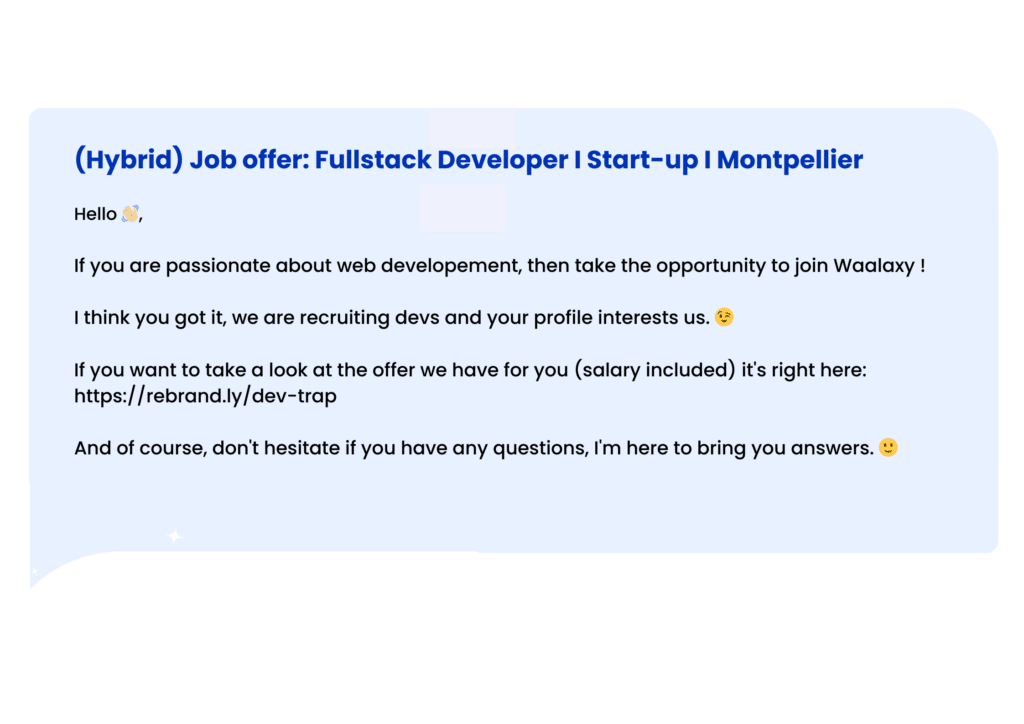
A well-written job description like this can’t just sit on the shelf. You need to get it out to as many people as possible (and ideally as many qualified people as possible). As a priority, you’ll certainly be thinking of specialist employment platforms such as Welcome to the Jungle and Indeed, or the “Careers” page on your brand’s website. 💼
Of course, Linkedin is the essential social network for posting your job description. But rather than just posting it, I’d advise you to be proactive and contact the most suitable candidates yourself. Don’t panic! Automated prospecting on Linkedin is ultra-simple with Waalaxy. If you’d like to delve deeper into the subject, take a look at our article on recruitment campaigns. 👀
You can even get to grips with the subject directly by downloading the Waalaxy extension and enjoying a free week. 😍
As soon as the first applications are received, the “parsing“ method will help you save time. Parsing is a process that automates the extraction of relevant information from all CVs received, classifying them according to certain criteria within an ATS or Applicant Tracking System (a recruitment software basically)
ATS is one of HR teams’ key time-saving tools.
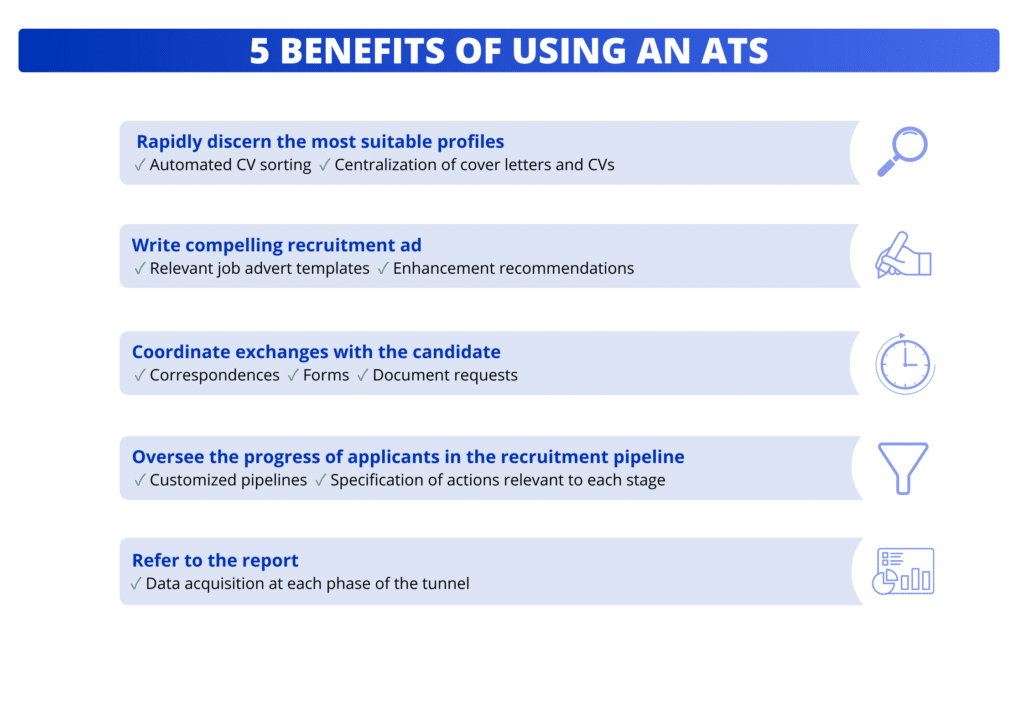
There are many ATS solutions on the market, but among the most reliable are those from Beetween, WeRecruit and Flatchr.
Retention: focus on exchange between candidate and HR team
The aim of the retention stage is to maintain talent’s interest in your company and the position on offer. This is probably the stage of recruitment where the human element comes into play the most:
- Communicate with applicants on a regular basis, giving them all the essential information about your process and next steps. ℹ️
- By this stage, the volume of candidates has already been filtered, so you can talk to them in a more customized way, mentioning, for example, specific aspects of the job they might be interested in. 📐
- Involve job applicants in your company’s projects by sharing your latest news. 🗞️
- Invite them on site to meet and discuss with your teams as part of an employee onboarding day. 🤝
- Put them through their paces with tests to help them project themselves onto the position to be filled. 🧪
The growth hiring techniques mentioned above will also have the added benefit of reducing the risk of them turning to other opportunities. At the very least, they’ll seem less engaging! 😉
Referal: recruiting ambassadors internally
What better way to promote your company than through recommendations? And who better than your employees to talk about what you have to offer? As a company, you’ll find your best ambassadors internally:
👉 Build your own team of influencers ! Designate 3 or 4 people from various departments, ideally figures with an already well-developed community on Linkedin and experts in their field to bring credibility to your company.
👉 Plan with them regular posts on their social networks on each employee-ambassador’s topic of expertise, their work environment, professional anecdotes, testimonials. For exemple, Hannah and Mike don’t hesitate to talk about their working experience in Waalaxy. 😍
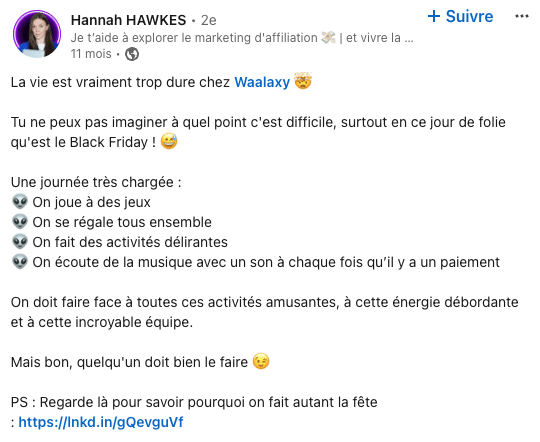
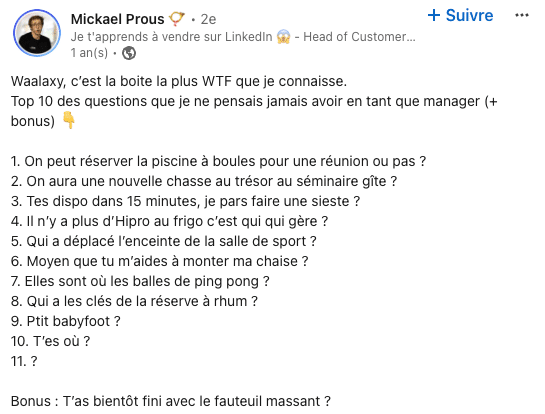
👉 Vary the media on which your internal ambassadors will speak. In addition to Linkedin posts, have them express themselves on blog articles, in video or during webinars.
👉 Encourage interaction between them and talent on social networks or live at open days.
👉 Offer a profitable co-optation program ! Your budding influencers know your values and may be able to submit profiles already aligned with the company culture.
Revenue: analyzing recruitment KPIs
Every strategic action taken by a company must be measurable, as specified by the SMART goals method.
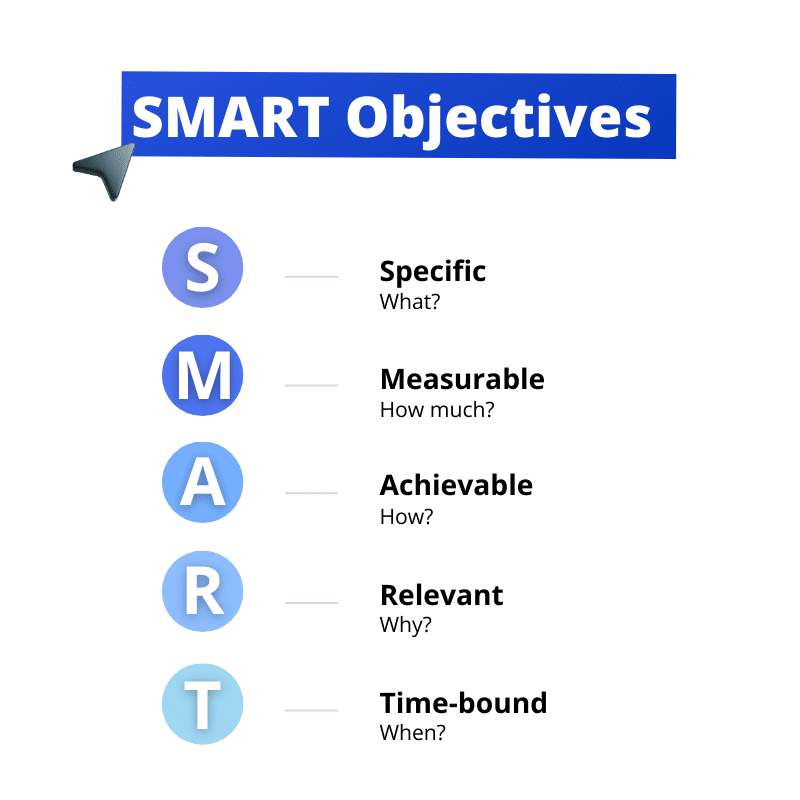
This enables decision-makers to assess the impact and return on investment, and subsequently adjust the angle of attack. Recruitment is no exception to this rule.
There are KPIs for estimating the speed of recruitment and the time allocated to the process. 🏎️ Generally speaking, the shorter the better (for once!) to reduce the risk of losing qualified profiles to other recruiters:
- Time-to-Hire : the time elapsed between the start of the search and the candidate’s acceptance of the offer.
- Time-to-Fill : time elapsed between the creation of the position and the day the talent arrives.
Don’t neglect KPIs on the qualification of applicants and new recruits.☝️ If they are positive, they reflect a well-executed growth hiring strategy.
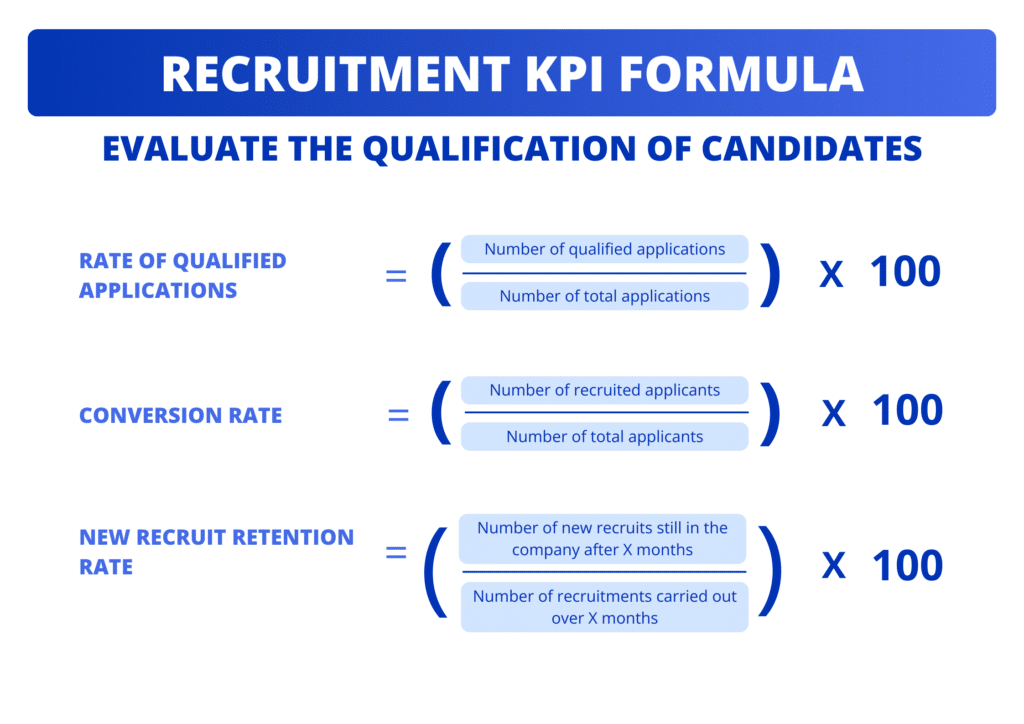
The KPIs are essential for assessing the relevance and attractiveness of your job offers.📝 They also help to determine whether recruitment budgets are well optimized.
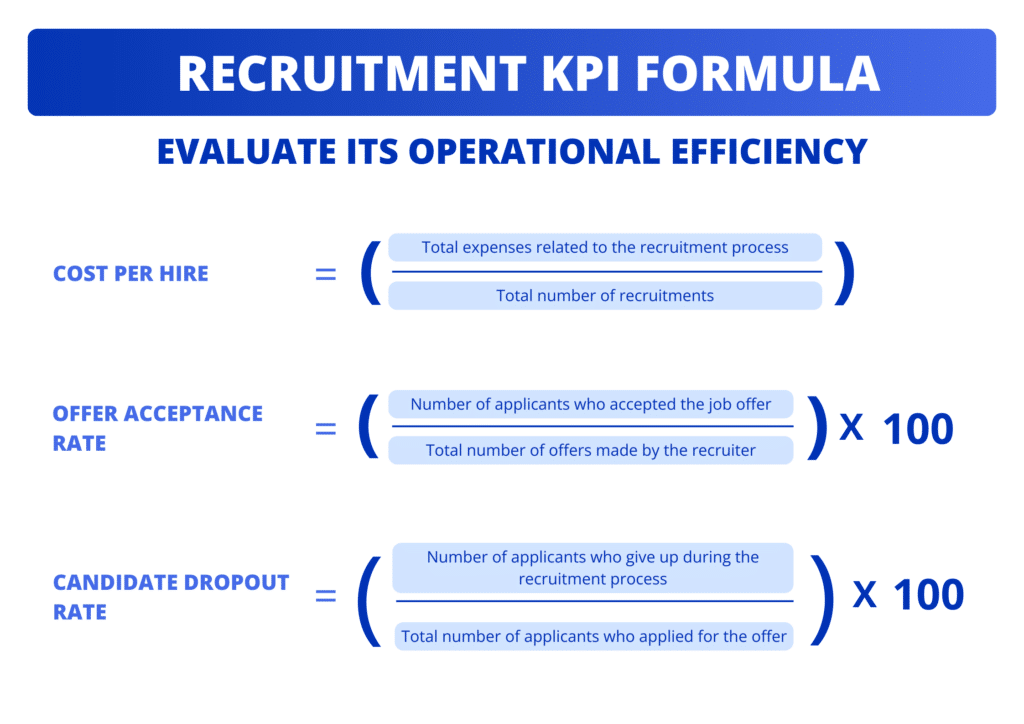
Finally, think about the KPIs linked to thecandidate experience 👌 They’re top for estimating the impact of your employer brand:
- Net Promoter Score (NPS) : the probability that your candidates will recommend your recruitment process to other companies. A great way to assess the impact of your employer brand!
- Average response time : measure of how quickly you respond to applicants after each interaction with them (receipt of application, interviews, feedback, etc.).
What are you waiting for to implement a Growth hiring strategy?
Growth hiring is certainly a recent approach, but one that is rapidly proving its worth in areas where traditional, more linear recruitment methods are struggling to develop an ability to attract the interest of actively seeking talent.
Based on existing, tried-and-tested practices such as growth or inbound recruiting, it’s a win-win situation for both you, the recruiter, and those who apply to your recruitment ads:
- You save time by automating a large part of the recruitment process. ⏳
- You implement a strategy to recruit the best talent. 🤹
- You offer candidates an engaging experience that involves them in the company’s challenges right from the start of recruitment. ✅
Considering all this advice, adopting growth hiring will become a necessity for every true business owner !
FAQ (frequently asked questions) about growth hiring
What type of company is growth hiring for?
Growth hiring is generally recommended for companies in growth phase such as startups or SaaS companies, in order to respond quickly and efficiently to their changing needs. However, this method is also suitable for :
- Highly seasonal establishments with a view to urgent recruitment. 🚨
- Tech companies which are rapidly evolving and looking for in-demand profiles such as engineers and developers. 💻
- Multinationals or big companies undergoing a digital transformation looking to hire profiles specializing in AI, data or cybersecurity. 🔒
What are the most sought-after growth-hiring professions?
Successful companies basing their recruitment on growth hiring will tend instead to recruit people in technological professions (developers, engineers, data scientists…), marketing-related positions (SEO experts, growth marketers), or sales profiles (Business developers, Customer Success Managers…). 💼
How does growth hiring use AI in the recruitment process?
AI integrated into recruitment tools such as ATS (Applicant Tracking Software) makes decision-making easier and faster, by analyzing and selecting in advance the CVs that best match the position to be filled. Some predictive AIs can even succeed in accurately determining which candidates will be most likely to succeed at all stages and best conform to the corporate culture. 🔮

